📍 From My Latest Podcast Episode: I’ve been getting some thoughtful questions from subscribers about Season 1 that require understanding Korean cultural and social context. These aren’t just casual curiosities – they’re the kind of questions that open new windows into why this show feels so psychologically authentic.
Today, I’m diving into three main questions that came up, including whether kids from completely different economic backgrounds can actually attend the same Korean school.
⚠️ Please ignore any Korean text that appears – I’ve noticed Korean fans also visit my blog, so I include Korean notes to help their understanding 🙏
📢 Fair Use Notice
This post contains copyrighted material from “Weak Hero” (© Wavve/Netflix) used for educational analysis, criticism, and commentary purposes under fair use doctrine. All rights belong to original creators.

The School System Reality Check That Started Everything
Before addressing the main questions, I have to share something that genuinely amazes me about international K-drama fans – their incredibly sophisticated understanding of Korean cultural dynamics and educational systems.
The depth of cultural insight that non-Korean viewers bring to analysing shows like Weak Hero consistently surprises me, and it’s exactly this kind of cross-cultural discussion that makes these conversations so enriching.

Is it true, like in the dramas, that all the kids in a homeroom class stay together through the whole day, more or less in one room (gym class and chemistry being exceptions, I guess) and the teachers rotate from class to class with time spent working in their shared office when they aren’t teaching? Cuz, that looks like the kids are unsupervised for long stretches of time spent every day with the same group of people … a situation where bullying could obviously take hold fairly easily.
This subscriber’s Canadian perspective highlighted something crucial – the Korean homeroom system creates perfect conditions for the kind of psychological warfare we see in Weak Hero.
Su-ho, Si-eun, and Beom-seok were all in Class 1-6, spending basically their entire lives together in one classroom from March 2022 until late February 2023.
Unlike North American schools where students move between different classrooms and social groups, Korean students are trapped with the same people for 12+ hours a day, including night study sessions until 9 or 10 PM.

Question One: Was Si-eun Actually Sick as a Child?
One subscriber noticed something that made me reconsider Si-eun’s entire backstory. When Si-eun’s father asks, “Did you faint again?” 또 기절했어? and Si-eun responds, “I don’t faint anymore” 이젠 안 그래요, Then in Class 2, he faints during that car accident, even though the truck didn’t hit him that hard.

I haven’t done a proper deep dive into the script book yet, but drawing from another subscriber’s thoughtful analysis, I think there’s something significant here. When little Si-eun overhears his parents fighting, they’re clearly arguing about whether they should have had him at all. His dad was asking mom where she was when their son broke his arm, and she shot back that she agreed to have him because they were going to raise him together. Dad said he hadn’t known the boy would get hurt so much.
Think about that for a second. Little Si-eun would have been convinced that he was unwanted after hearing that conversation. So he goes to his room, locks the door, and does math. That becomes his coping mechanism – if he focuses on schoolwork, nobody can hurt him and maybe he can prove his worth.
This subscriber suggested that Si-eun might be neurodivergent, possibly on the autism spectrum. Isolating himself, not communicating, focusing his whole life on one thing, becoming overwhelmed by outside stimulus – these could definitely be signs. And you know what? That would explain so much about why his achievement-oriented parents were disappointed and maybe even scared.
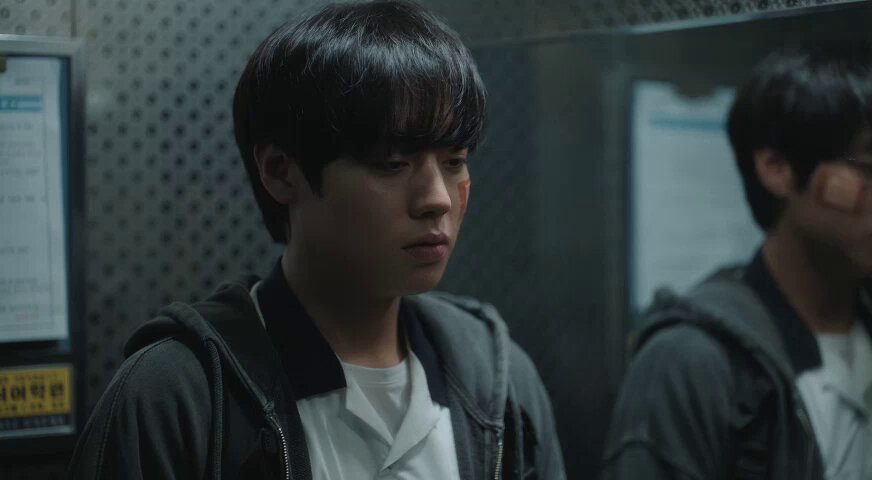
Plus, thinking about Si-eun’s posture throughout the series – Park Ji-hoon deliberately made him hunch his shoulders and curve his back. The actor said he observed that kids who suffer from school violence have this common trait of hunching over, so he incorporated that into his performance. 학교폭력 피해자들의 특징적인 자세
So yeah, I think Si-eun probably got picked on not just in high school, but throughout elementary and middle school too. Being the nerdy kid who only studies? That makes you a target, especially if you’re already dealing with other challenges.

Question Two: The Heartbreaking Truth About Beom-seok’s “Study Abroad”
Another question was about Beom-seok’s family situation – where are his mother and brother? Why is he always alone in that huge house? 범석이는 왜 항상 그 큰 집에 혼자 있을까?
Oh my goodness, I just discovered this in the script book! Beom-seok actually lives with his adoptive mother too, and when he goes to steal his adoptive father’s watch, there’s a part where his adoptive mother is sleeping on the couch in the living room! It seems like that part was either cut from the final version or wasn’t included in the directing
Speaking in terms of Korean social context, seeing Oh Jin-won sleeping alone in that big bed made me think his real son and wife are probably living overseas. In Korea, it’s pretty common for wealthy political figures to send their kids abroad for education, and usually the mom goes with them to take care of everything. 유학 보내고 엄마가 따라가는 경우가 많아
But here’s something that completely shifted my understanding of Beom-seok’s story. Director Yoo Soo-min basically confirmed that fans’ theories about Beom-seok being alive in the Philippines are correct, but not for the reasons we thought.

“So I think he went even though he didn’t want to, thinking of Su-ho….”
The director said:
I actually think Beom-seok’s study abroad wasn’t running away. He didn’t want to go, but Su-ho was in an environment where it was hard to pay hospital bills. Only if he went could Su-ho’s hospital costs be resolved. So I think he went even though he didn’t want to, thinking of Su-ho. I think this boy regrets it and learned a lot.
And that just broke my heart, you know? Think about it – Su-ho was in that private hospital room for almost two years, wearing an oxygen mask. 산소마스크를 끼고 거의 2년 Those medical bills must have been huge. Who else would pay for that?

“If you want that friend to at least keep breathing, it would be good to listen to the assemblyman.”
Remember Park Secretary’s gentle threat to Beom-seok? “If you want that friend to at least keep breathing, it would be good to listen to the assemblyman.” That’s exactly what happened. This boy went to the Philippines not because he wanted to escape, but because it was the only way to keep the boy who depends on oxygen machines alive. He’s probably over there right now, quietly following orders and enduring it all.
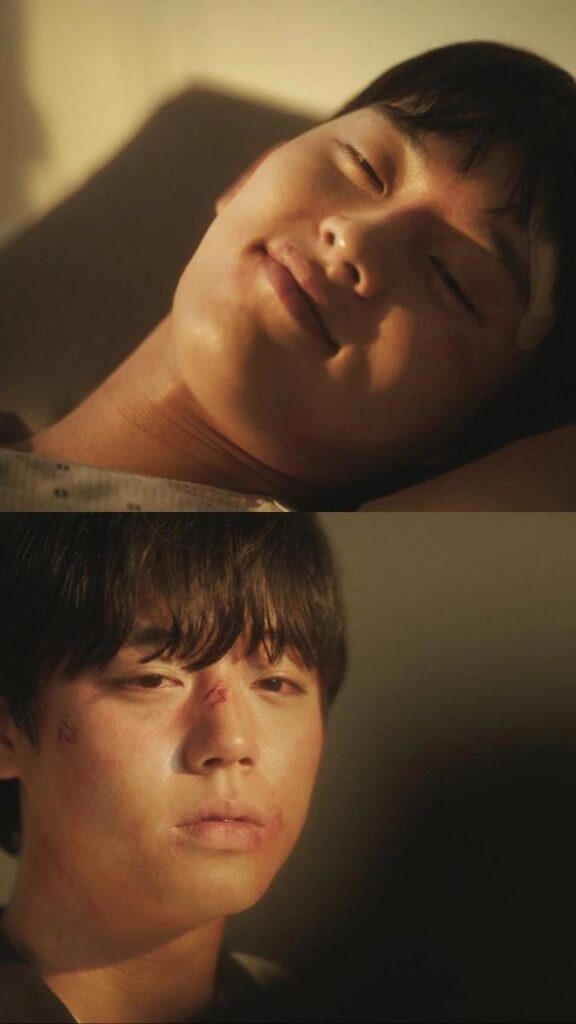
Question Three: Can Poor Kids and Rich Kids Really Attend the Same Korean School?
This was the question that really made me appreciate how realistically the show depicts Korean social dynamics. The answer is absolutely yes, and Weak Hero actually portrays this incredibly accurately.
Byeoksan High is located in Seocho district, which is one of Seoul’s wealthiest areas alongside Gangnam. 서초구는 강남과 함께 서울의 부촌 It’s famous for academic pressure and high educational standards. But that doesn’t mean only rich kids go there.
If you watch episode 1 carefully, when Si-eun is walking to school at dawn, you can see banners at the school entrance showing how many students got into prestigious universities like Seoul National, Yonsei, and Korea University. 서울대, 연세대, 고려대 진학 현황 That’s typical for schools considered “elite” – they advertise their college admission results like trophies.

But here’s the thing about Korean high school admissions – students usually go to schools in their district. Just because you live in Seocho doesn’t automatically make you wealthy. So having middle-class nerds, kids with economic difficulties like Su-ho, and wealthy families in the same school? Realistic.
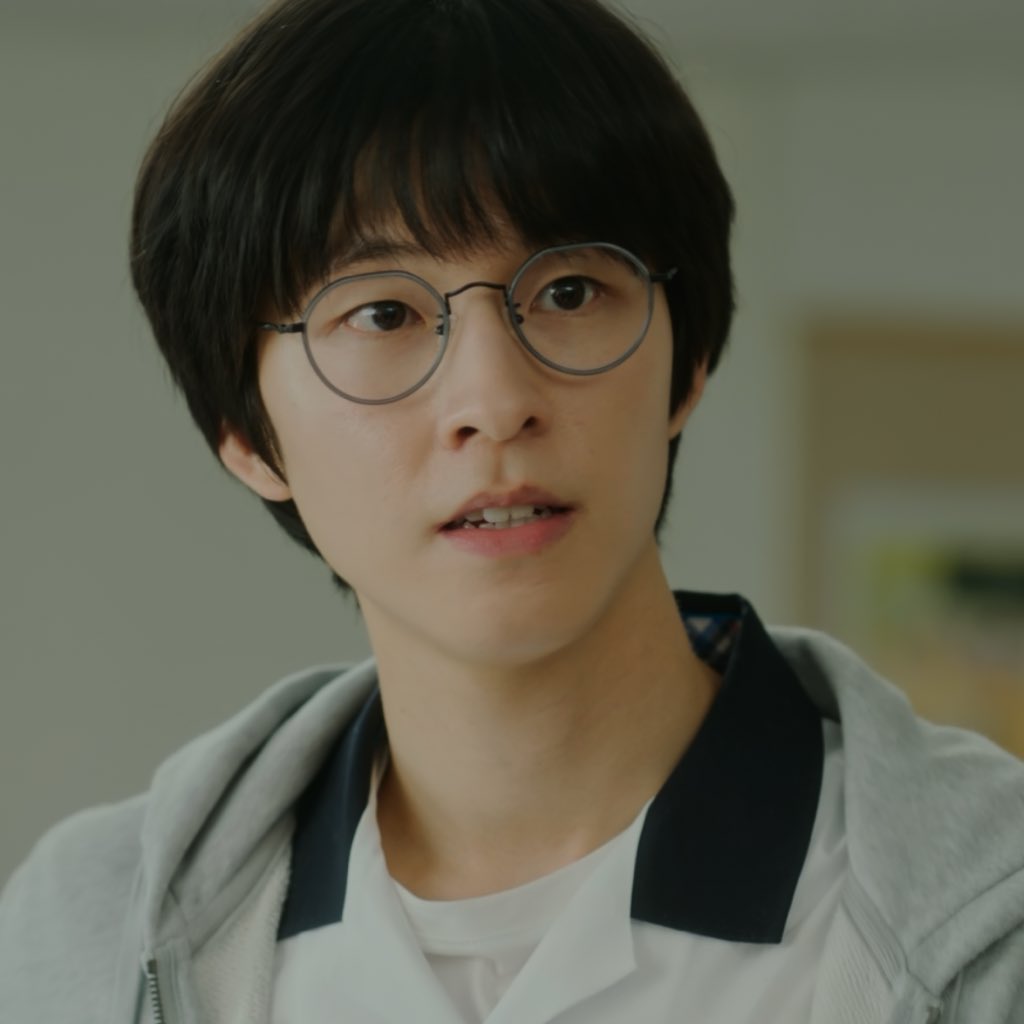
“gold spoon”
Beom-seok originally attended Mungang High, which was probably a private school with high tuition where wealthy and political families send their kids. That’s why Yeong-bin’s gang called him a “gold spoon” 금수저 when he transferred.
Eunjang High in Season 2 is completely different – it’s known as that kind of district area within Seoul where wealthy and working-class neighbourhoods are mixed together.
The show presents it as an alternative school that doesn’t care much about academics. They were the only school in Seoul willing to accept Si-eun after he basically half-killed those kids. It’s where problem students end up before juvenile detention, though not everyone there is necessarily a delinquent – just kids with lower academic performance.
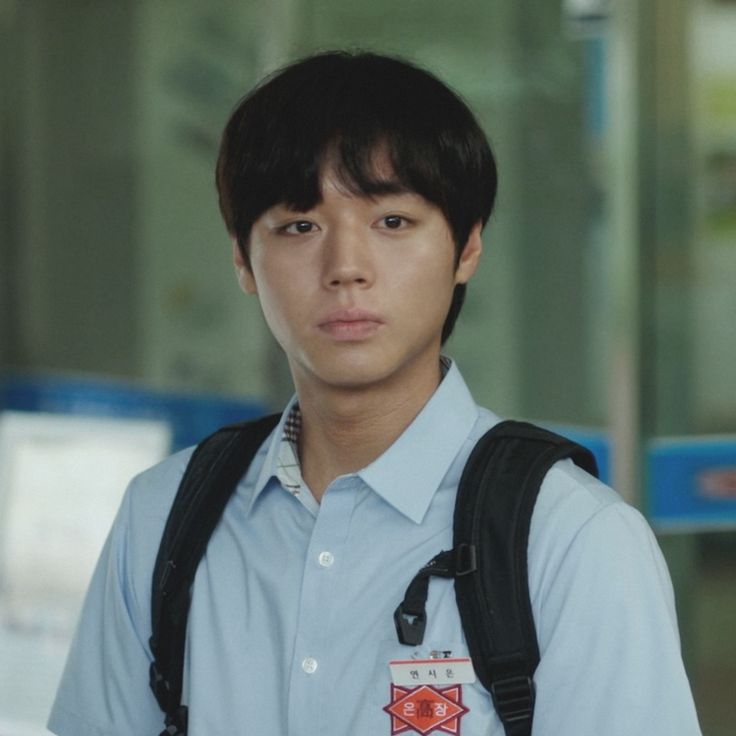
The Psychology of “Going Ballistic” When Everything Falls Apart
@morzs**** offered a perspective that reinforced what I had already found authentic about these explosive reactions – they recognised the same genuine emotional truth in these moments that had initially convinced me of their psychological realism.
This kind of validation from viewers really highlights how effective the show’s character writing is. When multiple people independently arrive at the same conclusions about what feels psychologically authentic, it suggests the creators successfully captured something universal about human emotional responses, even in extreme circumstances.
It’s particularly meaningful when a comment like this comes along because it confirms that the emotional beats we’re analysing aren’t just our interpretations – there’s something genuinely recognisable about how these characters process trauma and conflict that resonates across different viewers’ experiences.

I completely agree with you that Si-eun going ballistic feels totally realistic. I think that what makes Si-eun unbeatable in ep 8 is the fact that at that point he has nothing left to lose. It is a great parallel in the drama, that the first time Si-eun goes ballistic it happens for a similar reason. At the beginning all he had in his life that mattered to him were academics. So when the bullies started messing with it he lost control.
저는 Si-eun이 미쳐 날뛰는 게 완전히 현실적으로 느껴진다는 당신 의견에 완전히 동의해요. 제 생각에 8화에서 Si-eun을 무적으로 만드는 건 그 시점에서 그가 더 이상 잃을 것이 없다는 사실이에요. 드라마에서 훌륭한 대조를 보여주는데, Si-eun이 처음 미쳐 날뛰는 것도 비슷한 이유에서 일어나거든요. 처음에는 그의 인생에서 중요한 것이라고는 학업뿐이었어요. 그래서 일진들이 그것을 망치기 시작했을 때 통제력을 잃은 거죠.

This subscriber identified something crucial about Si-eun’s character development – the parallel between his two explosive moments. First when his academics (his only source of meaning) were threatened, and later when he lost Su-ho (his human connection that had become even more precious).
The subscriber continued with an insight that added another layer to my interpretation:
I don’t necessarily think that by the time the drama starts Si-eun still values his studies the most because he wants to receive the approval of his parents. It’s highly likely that that was the initial catalyst of his laser-focused academic journey (to earn their love/prove his worth) but to me it felt like he already gave up on his parents by the time we get to see him in the drama.
저는 드라마가 시작되는 시점에서 Si-eun이 여전히 부모의 인정을 받고 싶어서 학업을 가장 중시한다고 생각하지는 않아요. 그의 레이저처럼 집중된 학업 여정의 초기 촉매제는 (그들의 사랑을 얻기 위해/자신의 가치를 증명하기 위해) 그것이었을 가능성이 높지만, 제게는 드라마에서 그를 보게 되는 시점에는 이미 부모에 대해 포기한 것처럼 느껴졌어요.
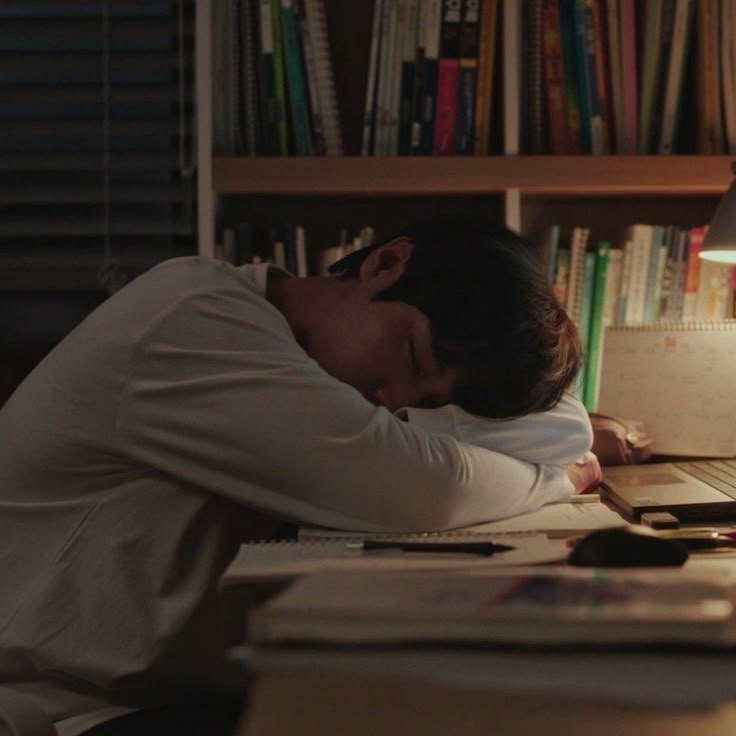
This suggests something heartbreaking – that Si-eun’s studying had become a coping mechanism he couldn’t abandon even after realising it wouldn’t earn him the love he originally sought:
When you develop a coping mechanism it can be really hard to let go of it or change the routine, even if you realise that it doesn’t solve the original problem. Especially if the coping mechanism can be explained to yourself as beneficial. Studying makes sense after all, you can get into good universities, earn a living etc. So why change it?
대처 메커니즘을 개발하면, 그것이 원래 문제를 해결하지 못한다는 것을 깨달았을 때조차 그것을 포기하거나 루틴을 바꾸는 것이 정말 어려울 수 있어요. 특히 그 대처 메커니즘을 자신에게 유익한 것으로 설명할 수 있다면 더욱 그래요. 결국 공부는 말이 되잖아요, 좋은 대학에 갈 수 있고, 생계를 꾸릴 수 있고 등등. 그럼 왜 바꿔야 하나요?
But what really struck me was their analysis of the progression from losing “goals” to losing “people”:
By the last episode he lost the most important person who saved him from his self-imposed loneliness. Him perceiving that he lost that relationship and also feeling responsible strips him of any kind of rhyme or reason. He attacks everyone because once again he has lost everything that mattered to him, except the second time when it happens it destroys him on a much deeper level.
마지막 에피소드에서 그는 자신이 스스로 부과한 외로움에서 구해준 가장 중요한 사람을 잃었어요. 그 관계를 잃었다고 인식하고 또한 책임감을 느끼는 것이 그에게서 모든 종류의 이성이나 이유를 박탈해버려요. 그는 모든 사람을 공격해요 왜냐하면 다시 한번 자신에게 중요했던 모든 것을 잃었기 때문이고, 다만 두 번째로 그것이 일어났을 때는 훨씬 더 깊은 차원에서 그를 파괴해버려요.

Why These Details Matter
What I find most impressive about these questions is how they reveal the careful thought put into the show’s realistic details. The social and psychological elements aren’t just random – they’re carefully constructed to reflect real situations that create specific types of trauma and resilience.
That subscriber who keeps leaving detailed analyses nailed something important when they said these boys both “resort to what they already know.” Si-eun retreats into isolation and academic achievement because that’s his survival mechanism. Beom-seok becomes desperate and clingy because he’s never experienced unconditional love.

And thinking about kids like these two boys – imagine growing up with such deficiency in the love and friendship department from day one, not receiving what they rightfully deserved. They can’t afford to lose the one person who finally made them feel those emotions that only the word “love” can contain. When they lose their little hero, honestly? Going ballistic makes perfect sense.
So I find it hard to agree with some people’s view that Si-eun’s final scene where he goes on a rampage with the fire extinguisher lacks believability. For me, it felt completely natural – those emotions came through so vividly that I could feel them in my skin.
No matter how i think about it… like I said in my audio, i’m not supporting or justifying si-eun’s violence, but when he lost Su-ho who meant so much to him, Si-eun going almost insane felt emotionally believable to me… that’s why i find it hard to agree with opinions that his actions lacked “plausibility”… he’s a teenage boy, but considering Si-eun’s background, him going half-crazy makes total sense to me…
아무리 생각해봐도… 제가 오디오에서 말했듯이, 저는 Si-eun의 폭력을 지지하거나 정당화하는 건 아니지만, 자신에게 그토록 의미 있었던 Su-ho를 잃었을 때 Si-eun이 거의 미쳐가는 것이 감정적으로 믿을 만하게 느껴졌어요… 그래서 그의 행동이 “개연성”이 부족하다는 의견들에 동의하기 어려워요… 그는 십대 소년이지만, Si-eun의 배경을 고려하면 그가 반쯤 미쳐가는 것이 제게는 완전히 말이 돼요…
One subscriber put it beautifully when they said these characters “kind of go ballistic.” Given their backgrounds, their explosive reactions aren’t unrealistic at all. If anything, they could have made even more extreme choices.

The Cultural Bridge We’re Building
These questions remind me why I love making content about Korean dramas for international audiences. They’re not just entertainment – they’re windows into completely different social systems and psychological realities.
When international viewers start noticing and questioning these cultural details, they’re building bridges of empathy and recognition across different educational systems, different approaches to childhood and adolescence, different ways of structuring social relationships.
Keep these thoughtful questions coming – you’re helping me see new angles in this story that I missed on my first few watches, and you’re helping preserve cultural context that might otherwise get lost in translation.
Continue the Weak Hero Discussion: Want more Korean cultural context? Check out my other analyses where I break down the subtle details that make this show so psychologically realistic. Your questions and observations matter – they’re keeping these characters alive through analysis and helping build understanding across cultures. Keep them coming!
🔗 Related Posts by Character & Language
📚 Si-eun (시은) Analysis
English Posts
- Si-eun’s Episode 8 Revenge: Why the “Implausible” Critique Completely Misses the Point
- Why Si-eun is a Character Magnet: The Psychology Behind Weak Hero’s Most Compelling Relationships
- Si-eun’s Hidden Violence: An Exploration
- Si-eun’s Revenge Debate: Core Fan Comments Compilation
🥊 Su-ho (수호) Analysis
English Posts
- Su-ho’s Lost Comedy Gold: The Wordplay That Made Weak Hero Fans Fall in Love (But English Subtitles Missed Everything)
- The Untold Story of Su-ho and Beom-seok: Why Their Friendship Was Doomed from the Start
Korean Posts
💔 Beom-seok (범석) Analysis
English Posts
- When Dreams Become Prison: Analyzing Beom-seok’s Boxing Ring Appearance in Si-eun’s Dreams
- When Subscribers Become Psychology Experts: Two Brilliant Takes on Why Beom-seok Destroyed Su-ho in That Ring
- Beom-seok’s Obsession with Su-ho: The Tragic Psychology Behind Weak Hero’s Most Complex Relationship
⚡ Seong-je (성제) Analysis
English Posts
🤝 Character Dynamics
English Posts
- Su-ho and Si-eun’s Relationship: When Fans Ask the Hard Questions About Weak Hero’s Most Debated Bond
- Understanding Yeong-i: The Character Who Reveals Everything About Weak Hero’s Heart
- Was Yeong-i Added to Tone Down the Bromance? When Subscribers Drop Literary Masterpieces in My Comments
- Jun-tae’s Japanese Mystery and the Heartwarming Go-tak Friendship in Weak Hero Class 2
🎭 Behind-the-Scenes & Analysis
English Posts
- Weak Hero Class 1 Script Book: Behind-the-Scenes Secrets That Will Change How You See the Show
- Script Book vs Final Cut: The Dream Scene That Made Us All Cry
- The Complete Behind-the-Scenes Story of Weak Hero Class 1 – Answering Subscriber Questions
- Weak Hero Class Change Video Explanation: Actors Switching Roles
- Weak Hero Deleted Scene Delivery! Beuksan High’s #1 Taking Down Bullies
🌍 Fan Community & Cultural Analysis
English Posts
- Weak Hero Fans Are Going INSANE and I’m Here for It: The Comments That Broke My Brain
- The Joy of Global Connection: Discussing Weak Hero’s Most Complex Relationships with Fans Around the World
- When International Fans Decode Korean Bromance: Why Weak Hero Reads as BL Overseas
- Three Questions That Reveal Weak Hero’s Hidden Korean Realism
- Why These Three Friends Always Sit Together During Exams (And Other Translation Secrets)
Korean Posts
📊 Quick Navigation by Interest
⚡ Character Dynamics:
- Su-ho and Si-eun’s Relationship
- Beom-seok’s Obsession with Su-ho
- When International Fans Decode Korean Bromance
🧠 Psychology Deep Dives:
- When Subscribers Become Psychology Experts
- Si-eun’s Episode 8 Revenge
- Why Si-eun is a Character Magnet
🎬 Behind-the-Scenes Content:
🌐 Translation & Cultural Context:
⚠️ Site Policies & Legal Information
✅ About JennieKdrama.com: This blog provides personal fan analysis and reviews of K-dramas, focusing on school action series like ‘Weak Hero.’ All content represents individual opinions and interpretations from a fan perspective, unrelated to official production teams.
⛔️ Copyright Disclaimer: All drama footage, images, and references belong to their respective copyright holders including streaming platforms and original creators. Materials are used minimally for educational criticism and analysis with no intention of copyright infringement.
🚫 Privacy Policy: This site follows standard web policies and does not directly collect personal information beyond basic analytics for content improvement. We use cookies to enhance user experience and may display advertisements.

Leave a Reply